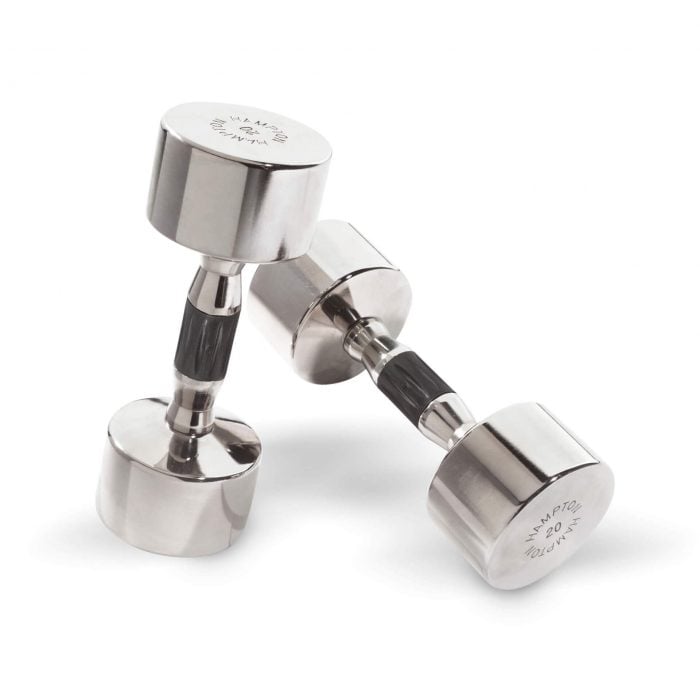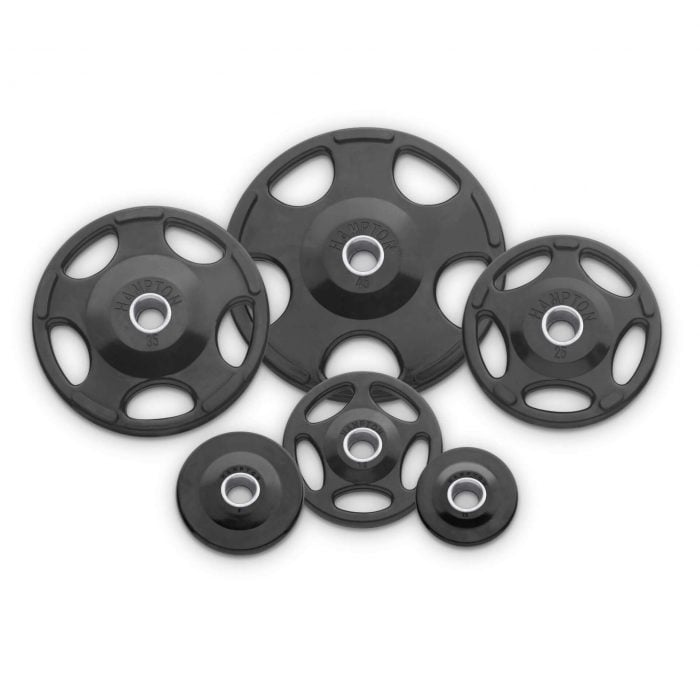Whether you’re sprinting across the court, executing a powerful dunk, or staying low in a defensive stance, your legs are the engine driving your basketball performance. In this article, we’ll look at the best leg workouts for basketball to help you stay injury-free and at the top of your game!
Key Takeaways:
1. Leg strength is an essential priority for any basketball player.
2. For players just starting a leg routine, it’s best to begin with foundational exercises before adding explosive plyometrics moves and strength training.
3. Incorporate plenty of rest and stretching to improve mobility and reduce the risk of injury.
Significance of Strong Legs in Basketball
Importance for Jumping, Running, and Directional Changes
Strong legs are essential for almost every movement on the court. From leaping for a rebound to driving past a defender, your ability to generate power and control comes from your lower body. Quick directional changes, explosive take-offs, and sustained sprinting rely on leg strength; without it, players may struggle to maintain their performance as the game progresses.
Strong legs aren’t just important for staying in top form; they can also help prevent injuries on and off the court.
Connection Between Leg Strength and Injury Prevention
Basketball is a high-impact sport, and players are susceptible to injuries like ACL tears and ankle sprains. Building leg strength provides stability to your joints, reducing injury risks. Strengthened muscles act as shock absorbers, protecting ligaments and bones from the stress of repetitive jumping and landing.
Additionally, well-trained legs improve proprioception—the body’s ability to sense movement and position—which is critical for avoiding missteps during dynamic movements. The bottom line? If you want to stay competitive in the game and avoid painful injuries, make sure you’re focusing on your legs!
Foundational Training for Basketball Success
Importance of Foundational Strength
Building a solid foundation is essential before you start pushing your body to its limits with advanced drills and heavy lifting. This includes developing foundational strength to support explosive movements and core stability to maintain proper alignment. A strong base helps prevent muscle imbalances that can lead to poor form and increased injury risk during high-intensity activities.
Below are a few exercises to help you begin strengthening your body, particularly your legs. These moves will give you a solid foundation as you approach your season!
Recommended products
-
Hampton Chrome Beauty-Grip Dumbbells – Pairs
$54.00 – $582.00 -
Hampton Olympic Grip Urethane Plates
$33.00 – $239.00
Exercises to Build Strength
Romanian Deadlifts
Romanian deadlifts are a fantastic exercise to strengthen your hamstrings and glutes. They also help improve hip mobility and lower body power, making them valuable to any leg workout routine.
Setup:
- Grip: Hold a barbell with a shoulder-width overhand grip.
- Stance: Stand with your feet hip-width apart, toes slightly pointed out.
- Starting Position: Hinge at your hips, keeping your back flat, knees slightly bent, and the barbell close to your body.
Movement:
- Lower: Push your hips back and lower the barbell towards your shins, keeping your back flat. Stop when you feel a good stretch in your hamstrings.
- Pause: Hold for a moment at the bottom position.
- Lift: Drive your hips forward to return to the starting position.
Technique Tips:
- Maintain a neutral spine throughout the movement to avoid lower back strain.
- Hinge at your hips, lowering the barbell or dumbbells to just below your knees.
- Engage your hamstrings to return to the starting position, focusing on slow and controlled movements.
Goblet Squats
Goblet squats are fantastic for building lower body strength and improving hip mobility. They’re also great for beginners as they help you maintain proper form and posture.
To do a goblet squat, hold a dumbbell or kettlebell in front of your chest. Stand with your feet shoulder-width apart, then squat down, keeping your back straight and chest up. Push through your heels to return to the starting position.
Glute Bridges
Essential for developing power in jumping and hip mobility, glute bridges are a foundational exercise for explosive players.
To do a glute bridge, lie on your back with your knees bent and feet flat. Position your feet close to your glutes for maximum range of motion. Drive through your heels to lift your hips until your body forms a straight line from shoulders to knees. Squeeze your glutes at the top before lowering, and avoid overextending your lower back.
Lunges
Lunges naturally mimic basketball movements, improving hip and knee stability while enhancing balance and coordination for in-game moves like cutting or pivoting. There are also plenty of variations on the basic lunge, giving you many options to work your muscles and improve your stability.
- Variations:
Isometric Squats (Split and Lateral)
Isometric squats build endurance and hip stability, which are critical for maintaining a low defensive stance and transitioning quickly between movements.
Execution:
- Hold a squat position for 20-30 seconds, ensuring knees remain aligned with toes.
- For split squats, position one foot forward and one back to target stability in both legs.
- Increase difficulty by adding weights or extending the duration.
These simple exercises will give you a strong foundation as you develop your skills on and off the court.
Developing Explosiveness with Plyometric Training Workouts
While foundational exercises like squats and lunges are indispensable for the basketball player, you shouldn’t stop there! Improve your explosive power by adding plyometric training to your routine.
Introduction to Plyometrics
Plyometric exercises increase power and speed through explosive movements. These exercises are particularly beneficial for basketball players, helping to enhance jump height and quickness. By training your muscles to exert maximum force in short intervals, plyometrics improve the neural pathways responsible for explosiveness.
Beginners should prioritize proper technique and progress gradually to avoid injury. The high-impact nature of these exercises can strain joints and tendons if not performed correctly.
Below are some great plyometric exercises to get you started!
Plyometric Exercises
Snap Downs
- Purpose: Teaches proper landing mechanics to reduce injury risks, making it a foundational plyometric exercise.
- Execution:
- Start on your toes with arms overhead, engaging your core for stability.
- Snap your arms down and drop into a quarter squat quickly and under control, focusing on a soft, balanced landing.
Two-Footed Box Jumps
- Purpose: Builds explosive power and coordination, crucial for improving vertical leap and speed.
- Execution:
- Stand in front of a box or platform with feet shoulder-width apart.
- Use a powerful arm swing and leg drive to jump onto the box. Aim to land with knees slightly bent to absorb impact.
- Step down carefully to avoid unnecessary strain on the knees.
A high-quality piece of equipment is essential for box jumps. Low-quality boxes can tip over during exercises, potentially causing a fall and increasing your risk of injury. The Hampton 3-in-1 Plyometric Box eliminates these concerns with its stable base, anti-slip surface, and high-density foam. Plus, you can quickly flip the box into three different configurations for maximum versatility!
Butt Kicks and High Knees
- Purpose: Enhances flexibility and simulates quick transitions, vital for sprinting and recovering on defense.
- Execution:
- Perform for 20-30 seconds at a high intensity, focusing on driving your heels toward your glutes (butt kicks) or raising your knees above hip height (high knees).
Over-and-Back Jumps
- Purpose: Improves lateral agility and coordination, essential for quick side-to-side movements during defense.
- Execution:
- Jump over a line or low barrier laterally, landing softly with controlled movements.
- Maintain a steady pace for 20-30 seconds, keeping your core engaged.
These plyometric moves will prepare your body for dynamic court activity!
Advanced Strength-Building and Power Moves
Strength and power training can significantly enhance your performance as a basketball player. By building muscle mass and improving explosive power, you can jump higher, run faster, and change direction more quickly. Strength training also helps prevent injuries, particularly those related to the lower body.
Integrating Weight Training
Weight training complements plyometrics by building the raw strength needed for powerful movements. A balanced routine ensures you’re not only explosive but also resilient to the demands of basketball. Combining heavy lifts with explosive exercises develops fast-twitch muscle fibers, improving both speed and power.
Key Strength Movements
Power Clean
- Purpose: Develops total body explosiveness and coordination, translating directly to improved jump takeoff.
- Technique Tips:
- Start with the barbell on the ground. Keep your back straight and chest up.
- Explosively lift the bar to shoulder height, driving through your legs and hips.
- Finish the movement by squatting slightly under the bar before standing fully upright.
Speed Squats
- Purpose: Enhances fast-twitch muscle response, improving quickness and agility.
- Execution:
- Use lighter weights to focus on speed and explosiveness.
- Perform controlled squats with an emphasis on powerful upward movement.
Step-Ups
- Purpose: Builds single-leg strength and mobility, helping to address imbalances.
- Execution:
- Use a bench or sturdy platform. Drive through your leading foot, focusing on stability and control.
- Alternate legs for balanced development.
Helpful hint: The Hampton 3-in-1 Plyometric Box works great for step-ups, too!
Rack Squats
- Purpose: Targets jump-specific power with a partial range of motion, allowing for heavier loads than full squats.
- Execution:
- Set the barbell in a rack at half-squat height. Engage your core and push explosively upward.
Wall Sits
- Purpose: Builds endurance for maintaining defensive stances and promotes knee health by strengthening stabilizing muscles.
- Execution:
- Sit against a wall with thighs parallel to the ground and knees at a 90-degree angle. Hold for 30-60 seconds, increasing time as you progress.
As you tackle strength and power training, make sure that you’re using barbells and weights that can withstand your workouts. Hampton’s wide selection of bars ensures you’ll find the quality piece you love!
Mobility and Recovery for Optimal Performance
While explosive plyometric moves and powerful lifting techniques are important for leg strength on the court, don’t neglect an equally important strategy: rest! Incorporating stretching days into your routine gives your mind and body a break, improving your mobility, lessening your risk of injury, and ensuring that your more intense workout days are optimally effective.
Role of Mobility in Basketball
Mobility improves range of motion and enhances performance by allowing for fluid and controlled movements. It also reduces injury risks by maintaining joint health. Players with enhanced mobility can execute moves like euro steps and spin moves with greater efficiency and fluidity.
Below are some essential exercises to help you enhance your mobility on your days off:
Mobility-Enhancing Exercises
Hip Flexor Stretches
- Purpose: Improves lateral and vertical movement efficiency by loosening tight hip flexors, common in athletes.
- Execution:
- Kneel with one foot forward and lean into the stretch, keeping your back straight.
- Hold for 20-30 seconds on each side, ensuring you don’t overextend your lower back.
Ankle Mobility Drills
- Purpose: Reduces injury risk and enhances stability by strengthening often-overlooked ankle joints.
- Execution:
- Perform controlled ankle circles or band-assisted stretches. Include dorsiflexion drills for better jump landings.
Calf Stretches
- Purpose: Enhances flexibility for better landings and reduces cramping during games.
- Execution:
- Stretch by leaning into a wall with one leg extended behind. Hold for 20-30 seconds per leg.
Recovery Practices
Stretching post-workout improves flexibility and reduces muscle soreness. Incorporate static stretches targeting major muscle groups used in basketball.
- Foam rollers or massage tools can help release tension in tight areas, improving recovery time.
- Ensure adequate rest, hydration, and balanced nutrition to optimize muscle repair and performance.
Remember to incorporate rest and stretching throughout your workout routine, including warm-ups and cool-downs!
Progressive Training Framework
Now that we’ve covered the building blocks of your basketball leg workouts, it’s time to put them together into a long-term plan. Below, we’ve given a sample 12-week schedule, but be sure to make adjustments based on your schedule, fitness level, and training needs!
12-Week Exercise Development Plan for the Lower Body
Weeks 1–4: Building Foundational Strength and Stability
- Focus: Squats, Romanian deadlifts, and basic plyometric drills like snap downs.
- Goal: Establish a strong base and proper form, emphasizing controlled movements to build muscle memory and endurance.
Weeks 5–8: Advancing to Dynamic and Explosive Movements
- Add exercises like power cleans and two-footed box jumps. Progressively increase the intensity by adding resistance or volume.
- Begin integrating sport-specific movement patterns to simulate in-game demands.
Weeks 9–12: Refining Explosiveness and Integrating Sport-Specific Drills
- Emphasize advanced plyometrics and jump-specific drills like seated box jumps to maximize vertical leap.
- Incorporate lateral movement exercises, such as defensive slide drills, to enhance agility and on-court performance.
In Conclusion
Strong legs are the cornerstone of basketball performance. A structured training routine that builds strength, explosiveness, and mobility can elevate your game and reduce the risk of injury.
As you complete your training, ensure your equipment is prepared to stay with you. Find your perfect bar from Hampton’s extensive bar collection for strength and power moves, and improve your plyometric performance with the outstanding 3-in-1 Plyometric Box. These pieces will enable you to tackle your toughest workouts with complete peace of mind!
Remember, consistent effort and progressive overload are key to unlocking your full potential. Commit to the process, and watch your performance soar!





